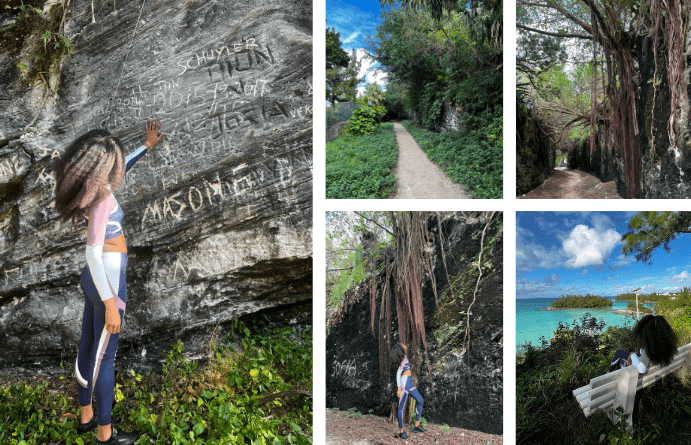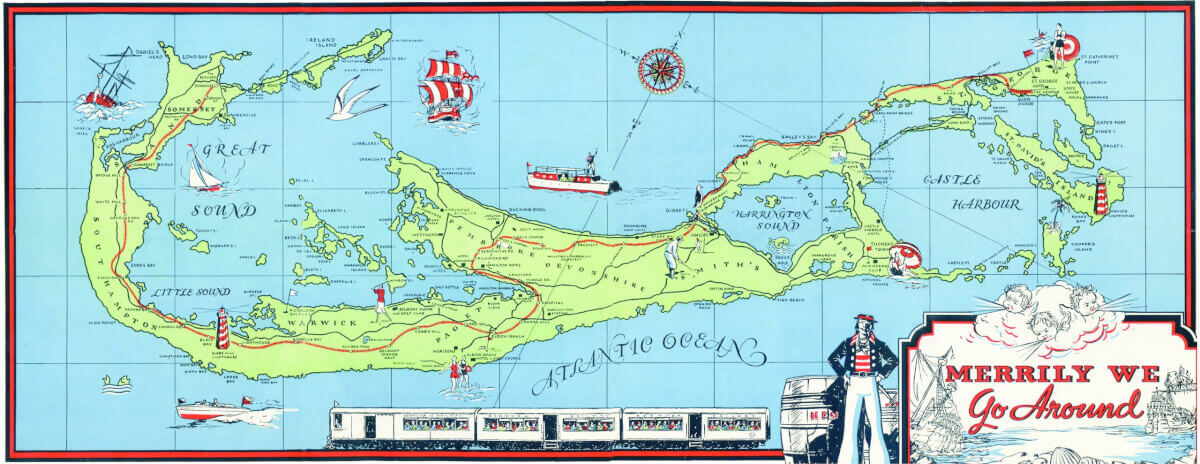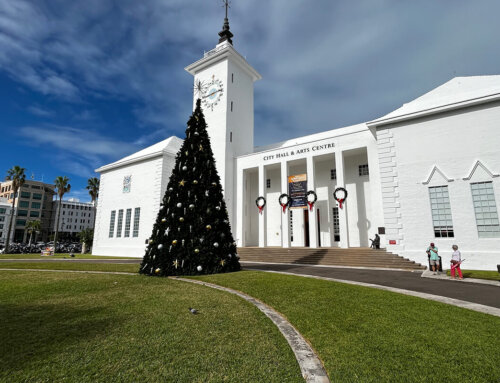The Bermuda Railway Trail
With public transportation limited to a few ferries plying their trade between the islands, and horse-drawn carriages providing a rather uncomfortable and unreliable service along the twisting roads, Bermuda’s transportation problems were the cause of many debates during the late 19th century. In 1875 the Governor, Major General John Henry Lefroy, asked London to provide a light railway for Bermuda. This project was eventually abandoned because the causeway was considered too narrow to accommodate the tracks.
By the early 1900s, a number of buses appeared on Bermuda’s roads, operating whatever route they wished, without timetables and unregulated by Government, caused much resentment amongst both Bermudians and tourists. Several petitions were soon presented to the Legislature, urging the prohibition of all automobiles. One of them, presented by 112 American guests of the Princess and Hamilton Hotels, drafted by Woodrow Wilson and signed by Mark Twain, undoubtedly carried much weight and the 1908 Motor Car Act was repealed. Bermudians and tourists alike had to again rely on horse carriages, bicycles, and their own feet for transportation.
In 1912, a Government-sponsored report recommended that a railway, built along its own right-of-way, would “best serve the demand for rapid and frequent communication between the extremities of the island.” No action followed until 1924, when a proposal was finally made to build such a railway and Bermuda Traction Limited was formed. By then there were some 1,000 carriages and 7,000 bicycles on Bermuda’s roads. The population was about 32,000.
After untold delays in purchasing land for right-of-ways, construction commenced in 1926. Difficulties were immediately encountered because of the rolling contour of Bermuda, and the many road and water crossings that had to be spanned. In all, some 10% of the track was spanned with 22 steel bridges and 34 timber trestles. The 22.5 miles of track formed a single line, divided into 15 sections with 44 scheduled stops, and 14 two-lane loop stations allowing “up trains” to pass “down trains”.
During World War II, Bermuda’s railway was heavily used, especially during the building of the U.S. Naval Base. Without proper maintenance, concern soon mounted as to the safety of the entire system, especially the wooden trestle bridges, which were showing signs of rot. Anticipating a great reduction in traffic and faced with massive repair bills, the privately-owned Bermuda Railway Company sold out to the Bermuda Government in January 1946 for £115,000. Rather than spend the estimated $850,000 on repairs, the Government decided to sell the Bermuda railway – lock, stock and barrel – to the Government of British Guiana.
In its 17 years of operation, the Bermuda Railway carried some 14 million passengers. All that remains today is the abandoned Railway Trail that winds through tranquil landscapes – a paradise for walking, hiking and pedal biking. Whether you decide to cycle from the old Somerset Station to Evans Bay, stroll from Khyber Pass to Rural Hill, Flatts to Ducks Puddle, or hike from Ferry Island to St. George’s, the Bermuda Railway Trail offers Bermudians and visitors a spectacular way to see Bermuda.







